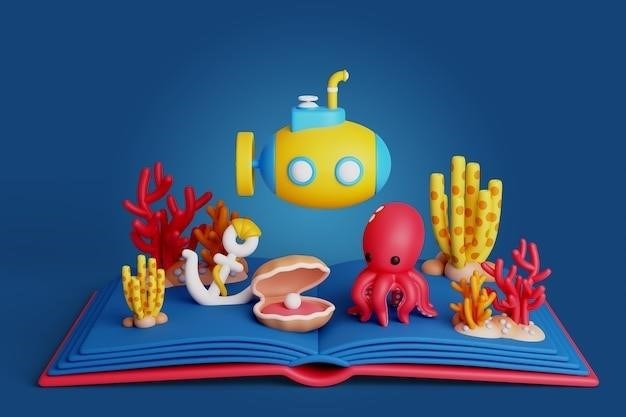Life of Pi PDF Book⁚ A Comprehensive Guide
This guide explores Yann Martel’s acclaimed novel, “Life of Pi,” offering insights into its availability, formats, author, characters, plot, themes, critical reception, adaptations, memorable quotes, discussion points, and online resources․ Discover the enduring impact of this philosophical tale․
Availability and Download Options

Securing a copy of “Life of Pi” in PDF format presents several avenues․ Numerous online platforms offer the ebook for purchase, providing immediate download access upon completion of the transaction․ These platforms often support various e-reader devices and software․ Free downloads may be available through less reputable sources, but caution is advised due to potential copyright infringement and the risk of malware․ Public libraries frequently maintain digital collections, granting access to ebooks through their online portals, often requiring a library card․ Used bookstores, both physical and online, may offer pre-owned copies that can be scanned into a PDF format, though this is a less convenient and potentially lower-quality option․ Remember to respect copyright laws when obtaining digital copies of copyrighted material․
Different Formats and Sources
Beyond the readily accessible PDF format, “Life of Pi” exists in a multitude of formats catering to diverse preferences․ The original print version, published by Mariner Books, remains a popular choice, offering a tangible reading experience․ E-book versions are widely available across various platforms, such as Kindle, Nook, and Kobo, each offering unique features like adjustable font sizes and integrated dictionaries․ Audiobooks provide an alternative for those preferring auditory consumption, narrated by talented voice actors․ Furthermore, the novel is often included in curated collections of classic or contemporary literature, sometimes bundled with supplementary materials like author interviews or critical essays․ These collections can be found in physical bookstores or online retailers, offering a broader context for engaging with Martel’s work․ The versatility in formats ensures accessibility for a broad readership․
Author and Publication Details
Yann Martel, the celebrated Canadian author, penned “Life of Pi,” a novel initially published in 2001 by Mariner Books, an imprint of Houghton Mifflin Harcourt․ The novel’s publication marked a significant moment in contemporary literature, quickly garnering critical acclaim and popular success․ Martel’s background and personal experiences undoubtedly influenced the novel’s themes of faith, survival, and storytelling․ The book’s initial release was followed by numerous reprints and translations into various languages, solidifying its status as a global literary phenomenon․ Its enduring popularity has led to continued publication across various formats and platforms, ensuring its accessibility to readers worldwide․ Martel’s subsequent works have also received recognition, but “Life of Pi” remains his most widely acclaimed and celebrated achievement․
Key Characters and Their Roles
Piscine Molitor “Pi” Patel, the protagonist, is a young Indian boy grappling with faith and survival after a shipwreck․ His journey of self-discovery is central to the narrative․ Richard Parker, a Bengal tiger, becomes Pi’s unlikely companion during his ordeal at sea, representing both a threat and a source of unexpected solace․ The author, serving as a framing device, guides the reader through Pi’s story, questioning the veracity of his narrative․ Other significant characters include Pi’s parents, Santosh and Gita Patel, who represent the family bond and cultural heritage Pi leaves behind․ His family’s emigration from India forms a pivotal backdrop to the story․ Secondary characters, such as the ship’s cook and other survivors, briefly appear, adding layers of complexity and raising questions about human nature under duress․ Each character contributes to the multifaceted exploration of survival, faith, and the power of storytelling․
Plot Summary and Key Events

The novel opens with Pi’s family’s emigration from Pondicherry, India, to Canada․ Their journey takes a catastrophic turn when their cargo ship sinks during a violent storm․ Pi finds himself adrift on a lifeboat with Richard Parker, a Bengal tiger․ The ensuing 227 days at sea form the core of the narrative, detailing Pi’s struggle for survival against the elements, hunger, and the constant threat posed by Richard Parker․ He develops a complex, symbiotic relationship with the tiger, learning to navigate their shared predicament․ Throughout his ordeal, Pi’s resourcefulness and resilience are tested․ He encounters various challenges, including storms, starvation, and encounters with other animals․ The narrative culminates in Pi’s eventual rescue, leaving the reader to contemplate the multiple versions of his incredible tale․ The ambiguity surrounding the true nature of Pi’s experiences adds to the novel’s enduring power․
Themes and Symbolism in the Novel
Life of Pi delves into profound themes, notably faith and spirituality․ Pi’s upbringing, encompassing Hinduism, Christianity, and Islam, reflects the novel’s exploration of religious belief and its role in providing solace and meaning in the face of adversity․ The central metaphor of the lifeboat becomes a microcosm of the human condition, with Pi and Richard Parker representing a delicate balance between survival and coexistence․ The ocean itself symbolizes the vastness and unpredictability of life, while the constant struggle for survival highlights the enduring human spirit․ Symbolism is prevalent throughout, with Richard Parker representing both a terrifying threat and, paradoxically, a source of companionship and structure․ The ambiguity surrounding the two versions of Pi’s story encourages readers to contemplate the nature of truth, storytelling, and the power of belief in shaping our understanding of reality․ The novel’s exploration of these multifaceted themes continues to resonate deeply with readers․
Critical Reception and Reviews
Upon its release, Life of Pi garnered widespread critical acclaim, earning numerous accolades, including the prestigious Man Booker Prize in 2002․ Reviewers lauded Martel’s masterful storytelling, praising the intricate plot, compelling characters, and profound exploration of faith, survival, and the human condition․ The novel’s unique blend of adventure, philosophy, and symbolism captivated readers and critics alike․ Many praised Martel’s ability to seamlessly weave together elements of realism and fantasy, creating a narrative that is both engaging and thought-provoking․ The ambiguity inherent in the story’s climax sparked considerable debate and discussion, further fueling its popularity and critical analysis․ Its exploration of complex themes, such as the nature of belief and the power of storytelling, continues to resonate with readers and scholars․ While some critics found the ending to be somewhat ambiguous, the overall reception was overwhelmingly positive, solidifying the novel’s status as a modern literary masterpiece․ The enduring impact of Life of Pi is a testament to its literary merit and its ability to elicit profound reflection․
Adaptations and Other Media
The immense popularity of Yann Martel’s Life of Pi led to several adaptations across various media platforms․ Most notably, Ang Lee directed a critically acclaimed film adaptation in 2012, starring Suraj Sharma as Pi Patel and Irrfan Khan as the adult Pi narrating his story․ This visually stunning film faithfully captured the essence of the novel, utilizing impressive CGI to depict the fantastical elements of Pi’s journey․ The movie received numerous awards, including four Oscars, and further broadened the novel’s reach to a global audience․ Beyond the film adaptation, Life of Pi has inspired various other creative interpretations․ These include stage productions, graphic novels, and even video games, each offering unique perspectives on the novel’s core themes and narrative․ These adaptations demonstrate the enduring appeal and versatility of Martel’s story, showcasing its ability to transcend the boundaries of its original medium and captivate audiences through diverse artistic expressions․ The continued interest in adapting Life of Pi highlights its timeless relevance and enduring power to inspire creative reinterpretations․
Popular Quotes and Analysis
Life of Pi is rich with evocative and thought-provoking quotes that resonate deeply with readers․ One particularly memorable quote, often cited, is Pi’s reflection on storytelling⁚ “The story has a happy ending․ That’s what matters․” This seemingly simple statement encapsulates the novel’s central theme of choosing belief and hope in the face of adversity․ Analysis of this quote often focuses on the ambiguity inherent in Pi’s narrative, prompting readers to question the nature of truth and the power of storytelling itself․ Another significant passage explores Pi’s complex relationship with Richard Parker⁚ “I survived because I had a story to tell․” This highlights the importance of narrative as a survival mechanism, both literally and metaphorically․ The novel’s abundant imagery, particularly the descriptions of the ocean and the animals Pi encounters, also lends itself to detailed textual analysis․ Scholars often interpret these symbolic representations to explore themes of faith, survival, and the human condition․ The exploration of these quotes and the rich imagery within the text provides a deeper understanding of Martel’s complex narrative and its philosophical implications․
Discussion and Study Guides
Numerous resources exist to facilitate engaging discussions and in-depth study of Life of Pi․ Formal study guides, often available in print and online, offer chapter summaries, character analyses, thematic explorations, and essay prompts․ These guides provide a structured approach to understanding the novel’s complexities, guiding readers through key passages and concepts․ Informal discussion guides, found on various websites and online forums, encourage reader interaction and diverse interpretations․ These platforms offer opportunities to share personal insights, compare perspectives, and delve into nuanced themes․ Many educational institutions incorporate Life of Pi into their curricula, providing students with supplementary materials and structured discussion frameworks․ These resources typically include quizzes, vocabulary exercises, and writing assignments designed to enhance comprehension and critical thinking skills․ Furthermore, online communities dedicated to the novel provide spaces for fans to engage in ongoing discussions, share interpretations, and explore the novel’s lasting impact․ The availability of these diverse resources ensures that readers of all backgrounds can access support for a richer and more rewarding engagement with Life of Pi․
Online Resources and Communities
The digital realm offers a wealth of resources for engaging with Life of Pi․ Websites dedicated to literature often feature detailed analyses, character profiles, and thematic explorations of the novel․ These resources provide in-depth insights, often going beyond what’s found in traditional study guides․ Online forums and social media groups dedicated to Life of Pi allow readers to connect, share interpretations, and discuss specific passages or themes․ This interactive environment fosters a vibrant community of readers, providing opportunities for collaborative understanding and diverse perspectives․ Many online bookstores offer digital versions of the novel, enabling easy access for readers worldwide․ These digital formats often include supplementary materials, such as author interviews or critical essays, enhancing the reading experience․ Academic databases provide access to scholarly articles and critical essays analyzing various aspects of Life of Pi, catering to those seeking a more in-depth academic engagement with the text․ These resources offer a rich tapestry of perspectives, from literary criticism to philosophical interpretations, enriching the understanding of the novel’s themes and impact․ The combination of readily available digital texts, interactive forums, and scholarly resources makes the online world a valuable asset for anyone interested in exploring Life of Pi․
